Another very busy evening up in Danbury yesterday for the August Skills Night – Lots of new faces, and as always, a great opportunity to see new things, chat and swap ideas.
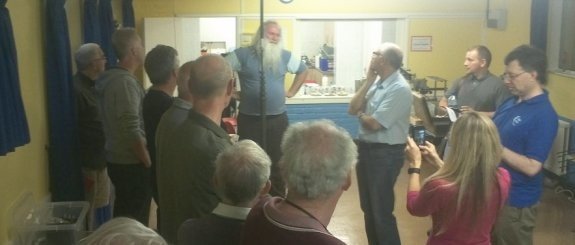
The night, hosted by the Chelmsford ARS Training Team, was slightly more quiet than recent months, partly due to holiday season and partly due to the threat of road closures on the A414 – Impressively, nearly 50 people turned up, including 14 folk at Foundation or Intermediate, and two potential new amateurs (Billy & Barry) looking to get started with the hobby.
Some DX visitors too: Terry, Pete and Jane from the MARTS club in Kent, John from South London, Robbie from St Albans, and John 9H5G from Malta (long trip). In fact only a small percentage of visitors were from the Chelmsford area, proving that the Skills Night is proving a hit with people from right across the region.
So, what was on offer this month? Here’s what visitors to the August Skills Night had in store…
Construction – Once again, a busy night for the CARS construction team – more Slim Jims and plenty of technical advice.
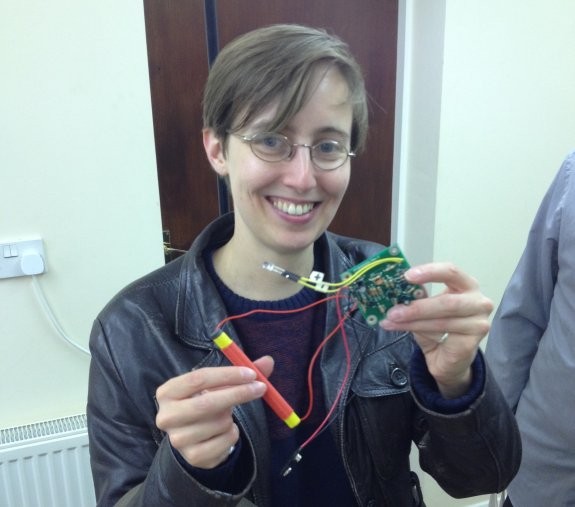
Well done to Peter M0PSD and Chris 2E0CUU for keeping the irons warm and the visitors busy!
Data Modes & Ham Goodies – Always a popular table, Charlie M0PZT was running a live data station on 20m demonstrating PSK31 and JT65. Also, radio programming for those looking get local repeaters programmed in to new purchases, plus a collection of Ham Goodies – This month, Charlie was demonstrating his new digimodes interface kit – £10 for all the parts needed to get a connection between rig and computer to work data.
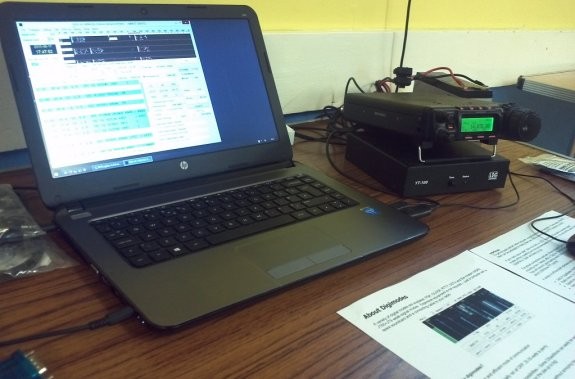
Satellites – Thanks as always to Steve M0SHQ for bringing along his kit to help those keen to talk to orbiting satellites, and for passing out some information from AMSAT. On the subject of space, check out the BBC Horizon programme on the dangers of space junk: Horizon on BBC iPlayer
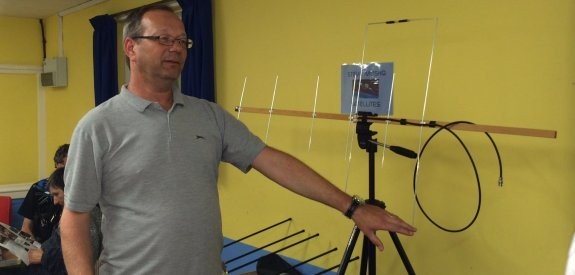
HF in the field – My thanks to Peter G0DZB for consistently finding new things to demonstrate. This month, as well as his Elecraft KX3 and other bits and bobs, his impressive MFJ HF antenna that had its first DZB outing earlier in the month at Shoebury East Beach – magically it’s a perfect 1:1 match on 40m and 80m. .
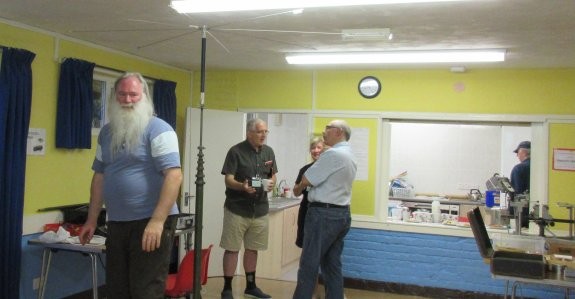
Morse and More – With many of the Essex CW Club regulars unable to make, thanks to Andy G0IBN and Oliver M0WAG for stepping up and running the Morse table. If you’re interested in learning CW, or improving your skills, Andy’s popular Morse classes resume in September – contact him for more details.
Essex Ham – It’s been a busy month for Essex Ham with the new Foundation Online training, and with so many keen to find out how it all works, I brought along a short video that outlines the course, plus access to a live classroom to let visitors try it out for themselves. Well done to Terry G3VFC for diving in and giving the course a test run, and to Paul G7BHE for offering to sign up and do some beta testing.
In the light of some unexpected comments on Facebook today, let me remind our readers that distance-learning is not a replacement for club training courses – it’s another resource available to those looking to study for their exam – we’re well aware that it’s not for everyone, but as highlighted at the RSGB Train The Trainers, it’s important to use modern training tools where appropriate, and to offer training in multiple formats, so learners can chose what’s best. How about we all work together and concentrate on getting people into the hobby? More on the course here: Foundation Online courses.
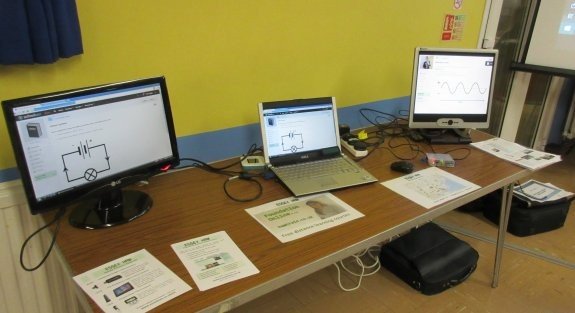
Callsign Badges – Well done to Jim 2E0JTW and Glynis 2E0CUQ for their hard work making callsign badges.
The Quiz – Thanks to Mike G4NVT for supplying this month’s questions, and to compare Clive G1UEC for keeping order!
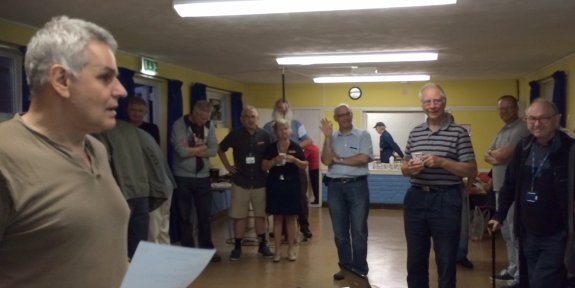
The guest antenna for the night was Andy G7TKK’s broadband portable HF antenna, which is based on the Tetrahedral Antenna designed by Alan Boswell G3NOQ. This impressive-looking antenna folds up into a small bag, and is resonant somewhere around the 10MHz mark. As per Peter’s comments below, when connected to Peter’s Elecraft KX3, this reached Hungary & Finland with 10 watts using CW. The antenna certainly raised some eyebrows with the locals in Danbury passing through…
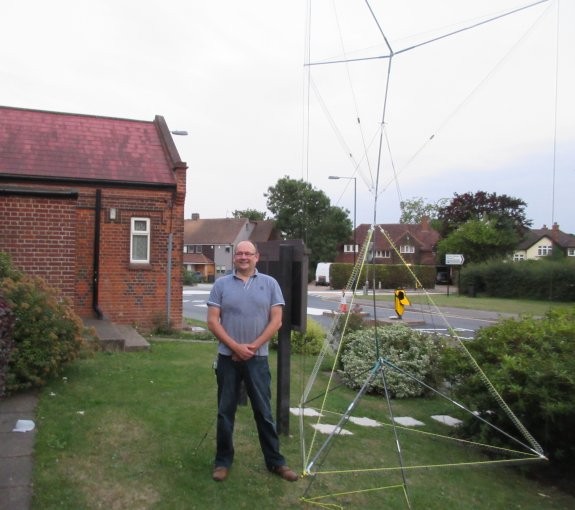
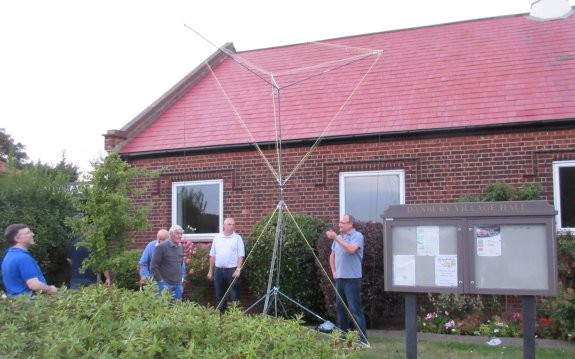
Final thanks go the unsung heroes in the kitchen – Myra and David for keeping the teas and coffees flowing in the kitchen.
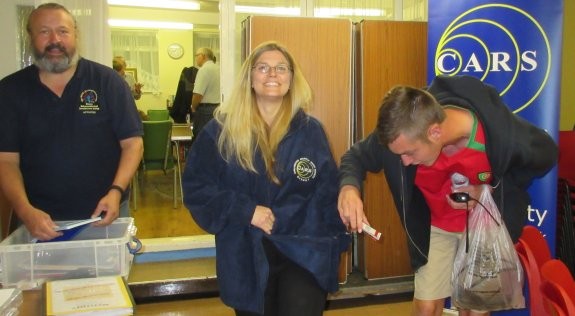
My thanks…
The official CARS write-up can be found here: CARS August Skills.
I’d like to express my personal thanks to those who turned up to help make tonight’s event a success, and to those who continue to support the Essex Skills Nights.
These events continue to bring amateurs from around the area together in the spirit of friendship, learning and sharing. Thanks for making it a success
Events are free, and all are welcome regardless of which club they belong to. The next Skills Night takes place on Monday the 21st of September.
Thanks all, and 73,
Pete M0PSX


G7TKK’s antenna was resonant somewhere around 10 Mhz, atleast that was the band with the lowest SWR ! 10W of CW from my KX3 was heard in Hungry and Finland.
Ta for that. Two interesting antennas with a bit of personality!
You’ve misunderstood my comment. The Reverse Beacon spots in “Hungry and Finland” were from when I took my KX3 outside and plugged it into Andy’s Tetrahedral Antenna not my vertical.
Ahh – Apologies Peter – Now fixed (and in the correct tense too!)
Regarding the Horizon programme, it seems a product of the bludgeoning space debris / junk industry which seeks ever larger grants to fund themselves and their pet projects.
To put the numbers in perspective, the largest source of human-made space debris is the testing of space weapons. A single weapon test in 2007 against a satellite in an 850 km orbit (one of the most popular orbital belts) generated over 150,000 pieces of Space Debris. Eight years later none of that debris has yet damaged another satellite, but generating hundreds of thousands of debris pieces in a popular satellite belt is clearly undesirable and unnecessary.
The largest source of space debris is naturally occurring, the millions of chunks of rock that fly though space near the Earth, many thousands of which entered the Earth’s atmosphere during the recent Perseids meteor shower.
Compared to these sources of debris the contribution of CubeSats and other small satellites is insignificant (>0.01%).